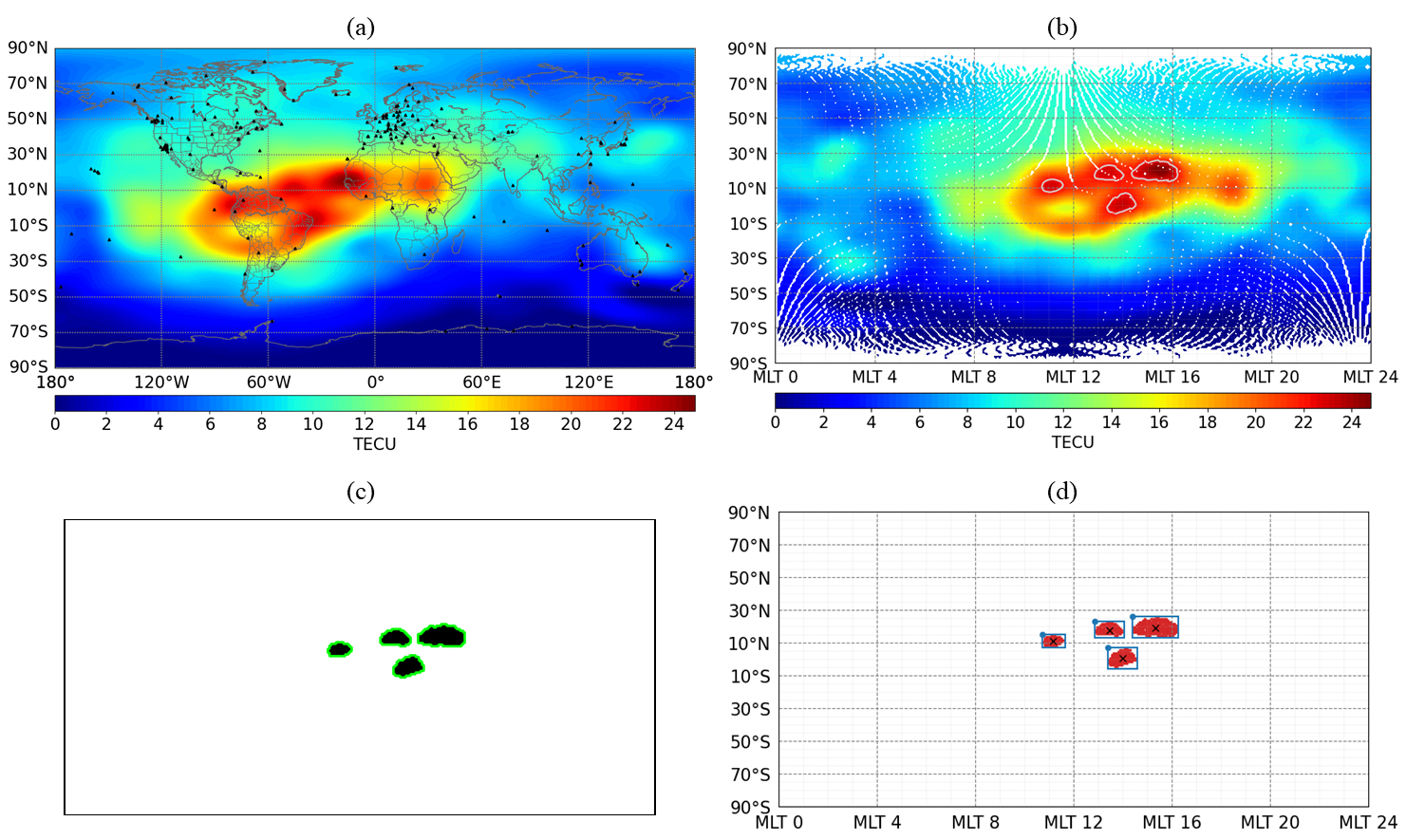MIST
Magnetosphere, Ionosphere and Solar-Terrestrial
Dynamics of TEC High Density Regions Seen in JPL GIMs: Variations With Latitude, Season and Geomagnetic Activity
By Martin Cafolla (University of Warwick)
The ionosphere is a portion of the upper atmosphere of the Earth consisting of free electrons and ions as a result of exposure to solar radiation. The variability of intensity of this radiation, as well as the differing levels of geomagnetic activity, results in fluctuations in electron number density across the ionosphere, characterised by the Total Electron Content (TEC). We define High Density Regions (HDRs) of TEC, that is regions of enhanced line-integrated electron number density, as the top 1% of TEC measurements from Global Ionospheric Maps (GIMs). We then construct an algorithm that isolates, detects and tracks these regions for 20 years of TEC data in sun-centered geomagnetic coordinates. This produces a contiguous set of uniquely labelled space-time TEC HDRs. We conduct a statistical study to determine reproducible trends in HDR formation location, trajectories and durations for different levels of geomagnetic activity at continental and sub-continental (small) scales.
We find that HDR formation is primarily driven by the sub-solar point, spanning the afternoon ionosphere, and in general occurs around four magnetic latitude clusters. Small HDRs typically move along lines of constant magnetic latitude in the direction of Earth rotation, while continental scale HDRs have much more complex paths. The statistical nature of our results provides a probabilistic prediction on future HDR behaviour, offering an ensemble constraint on enhancements seen in ionospheric models.

Example TEC map for 2009-07-23 at 16:30:00 UTC. Panel (a) plots the geographic TEC map. Each 1 degree by 1 degree grid point plots the Vertical TEC at that longitude/latitude. Black triangles show the locations of ground stations. Panel (b) plots the geomagnetic TEC map with grey contours at the top 1% value of TEC in the map, defining the High Density Regions (HDRs). Panel (c) isolates these HDRs and plots them in black, with green contours drawn around each black region to demonstrate the algorithm’s contour detection. Panel (d) plots the isolated HDRs in SM coordinates with bounding rectangles in blue and centroids marked in black, obtained by the detection/tracking algorithm.
See publication for details:
Cafolla, M. A., Chapman, S. C., Watkins, N. W., Meng, X., & Verkhoglyadova, O. P. (2025). Dynamics of TEC high density regions seen in JPL GIMs: Variations with latitude, season and geomagnetic activity. Space Weather, 23, e2024SW004307. DOI: 10.1029/2024SW004307